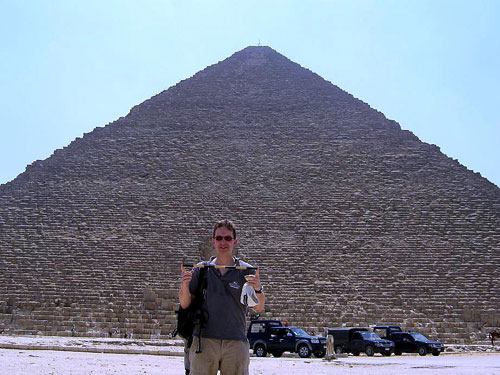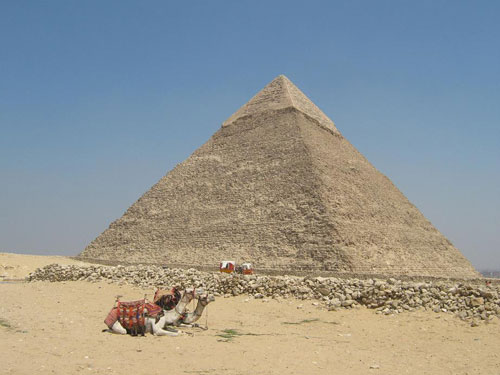It’s not every day that you get the chance to build a gigantic pyramid in the National Museum of Scotland! Running alongside the Fascinating Mummies exhibition, we are going to pull a crack team of pyramid builders together to recreate some of the monument building traditions of the Egyptian past.
This project will give a wider audience of visitors the opportunity to experience the secrets of Egyptian pyramid building. I am an Archaeologist and Egyptology Tutor at the University of Glasgow, and I am also an engineer, so I know a lot about the techniques used by the Ancient Egyptians to build their massive pyramid tombs. In 2008 I published a book about this, and I have been researching their methods for more than 10 years, so I am thrilled to be given the opportunity to do this.

First we will recreate some of the purification and dedication rituals that made the land where the pharaoh’s tomb was to be built sacred. Then the architects will carefully set out the ground plan, to just the right size, and with all the sides pointing in the right directions, to the north, south, east and west.
When this is complete we will assemble the teams of workers in place. Which team will you be on? Do you want to join ‘The Friends of Khufu’, or the ‘Drunkards of Menkaure’? These are the real names of the teams that built the pyramids of Giza. Big kids and little alike can also leave an offering for the pharaoh. We will show you how to write some of the most important hieroglyphs, the names of the pharaoh himself, and how to tell him what you will give him for the afterlife.
It’s meant to be fun, but the construction work will have to be accurately carried out to ensure that the pharaoh’s tomb looks just right once it is finished. When complete, we will dedicate the tomb to the pharaoh and ‘activate it’, so that it can protect his body and successfully send his spirit to the afterlife.
Some of the trainee teachers from the University of Glasgow Department of Education have kindly volunteered to come and help build the pyramid. They are currently studying the history of Ancient Egypt so that they can teach the next generation about it in Scotland’s primary schools. They are going to help visitors to participate in this once-in-a-lifetime chance to build a giant pyramid, albeit one made of cardboard boxes.
We will need to work quickly as we only have the weekend (the original Great Pyramid took 30 years to build!), but thankfully we won’t need to drag blocks of limestone across the floor of the Museum. We will need around 100 large cardboard blocks to complete the giant pyramid, and each one will have to be carefully assembled on the day.

On a more educational note, this exercise will be used to demonstrate how much information has been established by modern Egyptologists about the real processes, technologies and designs used to build the great pyramids of Egypt’s Old Kingdom, from about 2,700 B.C. to around 1,800 B.C. Thanks to the surveys in Egypt and translations of ancient papyruses (recording mathematical equations for calculating the heights and volumes of pyramids), we now know a lot about the construction methods they used. We also know a lot about the rituals and beliefs of the pyramid builders themselves, and about why they built these gigantic monuments.
Only the actual methods for lifting the blocks is still a bit of a mystery, but even here there is evidence that levers and sleds were used to slide the blocks up long smooth ramps to the top. None of these sleds have been found, but perhaps it’s because they were made of wood, and wood generally got used for other things once the construction projects were complete, or they may have been broken up and burnt on cold winter nights in the desert.

So if you want to know more, please come along, lend a hand or make an offering to the pharaoh, and take this opportunity to see the brilliant collection of valuable things in the National Museum of Scotland’s Egyptology collection. The Fascinating Mummies promise to be fascinating as well!
Join us at Egyptology Scotland for information about future lectures and events in your area.
